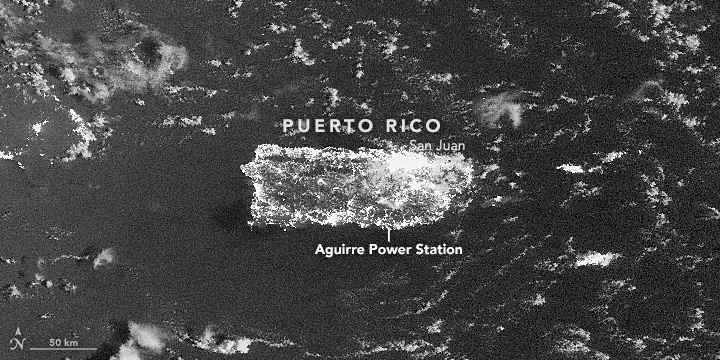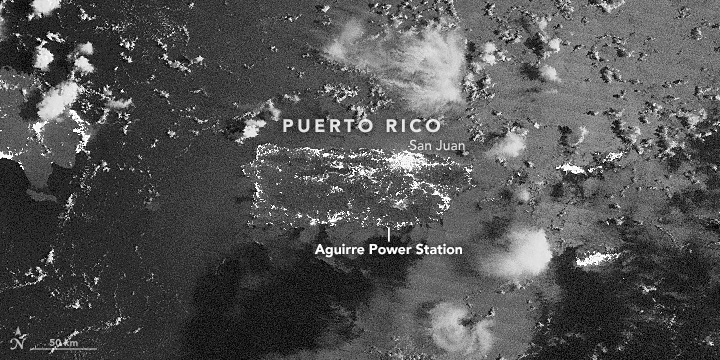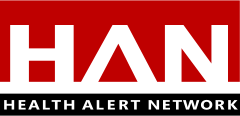And not only fertile for terrorist recruiters, but also for human traffickers, criminal gangs, prostitution rings — anyone who preys on the vulnerable……….”
Archive for the ‘Humanitarian’ Category
Attacks against health care in Syria, 2015–16: results from a real-time reporting tool
Wednesday, November 22nd, 2017“…..Between early November, 2015, and Dec 31 2016, 938 people were directly harmed in 402 incidents of violence against health care: 677 (72%) were wounded and 261 (28%) were killed. Most of the dead were adult males (68%), but the highest case fatality (39%) was seen in children aged younger than 5 years. 24% of attack victims were health workers. Around 44% of hospitals and 5% of all primary care clinics in mainly areas with a substantial presence of armed opposition groups experienced attacks. Aerial bombardment was the main form of attack. A third of health-care services were hit more than once. Services providing trauma care were attacked more than other services……”

Doctors Without Borders will urge India to remain the “pharmacy of the developing world” and rethink decision that solidifies Pfizer monopoly on critical pneumonia vaccine
Tuesday, November 21st, 2017“…..The U.S.-based drug corporation’s unmerited patent prevents vaccine manufacturers in India from developing and marketing PCV13 until 2026, depriving countless children of the opportunity to be protected against pneumonia, which kills 2,500 kids per day…..There are currently only two companies that make a pneumonia vaccine, Pfizer (PCV13) and GlaxoSmithKline (PCV10). These companies have already made more than $40 billion on their vaccines and have consistently fought to prevent others from entering the market with lower-price versions……”
Officials from Bangladesh insist that Myanmar must take the Rohingya back.
Sunday, November 5th, 2017“…..Bangladesh now finds itself in an impossible situation. One of Asia’s poorest countries, it is home to 160 million people — half the population of the United States — squeezed into a space the size of Iowa. The Rohingya refugees have taken over hillsides, chopped down countless trees to build their shelters and put such a stress on the economy of Bangladeshi border villages that
Facing international pressure to host the refugees and some domestic pressure to push them out, Bangladesh’s prime minister, Sheikh Hasina, has said that her country would continue to help the refugees on humanitarian grounds but that Myanmar must “take their nationals back.”
She has ordered the army to seal off roads around the camps to make sure Rohingya do not start migrating to towns. Her government has also decreed that Rohingya were not allowed to work or register for local cellphone service…..
“If they stay where they are living now,” said Anup Kumar Chakma, a retired Bangladeshi Army officer, “the entire area will become a fertile breeding ground.”
Volunteer medical team spent 10 days treating patients at 3 Rohingya refugee camps
Sunday, November 5th, 2017“…..There is an acute shortage of medication. There are not enough medications and life-saving drugs. There are about 90,000 pregnant women and lots of people are arriving every day and people have walked for days in the jungle, for 10 to 14 days, hungry, eating banana leaves on their way then they crossed the border and entered into refugee camps.
There are lots of sick kids, I have seen lots of illnesses that I have not seen in my 18-year medical career. Lots of respiratory illnesses, every other child with pneumonia. There were no diagnostic imaging, no x-rays, no labs that I could do any work-up for them. A horrible situation…….There are about 12 camps total, and there about 70,000 registered people who are living in each camp. There are lots of unregistered people there. They are sharing small tents. I have seen lots of young children … they were naked running around in the streets.
There is a lack of proper washrooms, they need sanitation there. There is a lack of clean water, they have put some drinking water pumps but it’s not enough. It’s very, very poor……”
”
CDC recommendations to healthcare providers treating patients in Puerto Rico and USVI, as well as those treating patients in the continental US who recently traveled in hurricane-affected areas during the period of September 2017 – March 2018.
Wednesday, October 25th, 2017Advice for Providers Treating Patients in or Recently Returned from Hurricane-Affected Areas, Including Puerto Rico and US Virgin Islands
Distributed via the CDC Health Alert Network
October 24, 2017, 1330 ET (1:30 PM ET)
CDCHAN-00408
Summary
The Centers for Disease Control and Prevention (CDC) is working with federal, state, territorial, and local agencies and global health partners in response to recent hurricanes. CDC is aware of media reports and anecdotal accounts of various infectious diseases in hurricane-affected areas, including Puerto Rico and the US Virgin Islands (USVI). Because of compromised drinking water and decreased access to safe water, food, and shelter, the conditions for outbreaks of infectious diseases exist.
The purpose of this HAN advisory is to remind clinicians assessing patients currently in or recently returned from hurricane-affected areas to be vigilant in looking for certain infectious diseases, including leptospirosis, dengue, hepatitis A, typhoid fever, vibriosis, and influenza. Additionally, this Advisory provides guidance to state and territorial health departments on enhanced disease reporting.
Background
Hurricanes Irma and Maria made landfall in Puerto Rico and USVI in September 2017, causing widespread flooding and devastation. Natural hazards associated with the storms continue to affect many areas. Infectious disease outbreaks of diarrheal and respiratory illnesses can occur when access to safe water and sewage systems are disrupted and personal hygiene is difficult to maintain. Additionally, vector borne diseases can occur due to increased mosquito breeding in standing water; both Puerto Rico and USVI are at risk for outbreaks of dengue, Zika, and chikungunya.
Health care providers and public health practitioners should be aware that post-hurricane environmental conditions may pose an increased risk for the spread of infectious diseases among patients in or recently returned from hurricane-affected areas; including leptospirosis, dengue, hepatitis A, typhoid fever, vibriosis, and influenza. The period of heightened risk may last through March 2018, based on current predictions of full restoration of power and safe water systems in Puerto Rico and USVI.
In addition, providers in health care facilities that have experienced water damage or contaminated water systems should be aware of the potential for increased risk of infections in those facilities due to invasive fungi, nontuberculous Mycobacterium species, Legionella species, and other Gram-negative bacteria associated with water (e.g., Pseudomonas), especially among critically ill or immunocompromised patients.
Cholera has not occurred in Puerto Rico or USVI in many decades and is not expected to occur post-hurricane.
Recommendations
These recommendations apply to healthcare providers treating patients in Puerto Rico and USVI, as well as those treating patients in the continental US who recently traveled in hurricane-affected areas (e.g., within the past 4 weeks), during the period of September 2017 – March 2018.
- Health care providers and public health practitioners in hurricane-affected areas should look for community and healthcare-associated infectious diseases.
- Health care providers in the continental US are encouraged to ask patients about recent travel (e.g., within the past 4 weeks) to hurricane-affected areas.
- All healthcare providers should consider less common infectious disease etiologies in patients presenting with evidence of acute respiratory illness, gastroenteritis, renal or hepatic failure, wound infection, or other febrile illness. Some particularly important infectious diseases to consider include leptospirosis, dengue, hepatitis A, typhoid fever, vibriosis, and influenza.
- In the context of limited laboratory resources in hurricane-affected areas, health care providers should contact their territorial or state health department if they need assistance with ordering specific diagnostic tests.
- For certain conditions, such as leptospirosis, empiric therapy should be considered pending results of diagnostic tests— treatment for leptospirosis is most effective when initiated early in the disease process. Providers can contact their territorial or state health department or CDC for consultation.
- Local health care providers are strongly encouraged to report patients for whom there is a high level of suspicion for leptospirosis, dengue, hepatitis A, typhoid, and vibriosis to their local health authorities, while awaiting laboratory confirmation.
- Confirmed cases of leptospirosis, dengue, hepatitis A, typhoid fever, and vibriosis should be immediately reported to the territorial or state health department to facilitate public health investigation and, as appropriate, mitigate the risk of local transmission. While some of these conditions are not listed as reportable conditions in all states, they are conditions of public health importance and should be reported.
For More Information
- General health information about hurricanes and other tropical storms: https://www.cdc.gov/disasters/hurricanes/index.html
- Information about Hurricane Maria: https://www.cdc.gov/disasters/hurricanes/hurricane_maria.html
- Information for Travelers:
- Travel notice for Hurricanes Irma and Maria in the Caribbean: https://wwwnc.cdc.gov/travel/notices/alert/hurricane-irma-in-the-caribbean
- Health advice for travelers to Puerto Rico: https://wwwnc.cdc.gov/travel/destinations/traveler/none/puerto-rico?s_cid=ncezid-dgmq-travel-single-001
- Health advice for travelers to the U.S. Virgin Islands: https://wwwnc.cdc.gov/travel/destinations/traveler/none/usvirgin-islands?s_cid=ncezid-dgmq-travel-leftnav-traveler
- Resources from CDC Health Information for International Travel 2018 (the Yellow Book):
- Post-travel Evaluation: https://wwwnc.cdc.gov/travel/yellowbook/2018/post-travel-evaluation/general-approach-to-the-returned-traveler
- Information about infectious diseases after a disaster: https://www.cdc.gov/disasters/disease/infectious.html
- Dengue: https://www.cdc.gov/dengue/index.html
- Hepatitis A: https://www.cdc.gov/hepatitis/HAV/index.htm
- Leptospirosis: https://www.cdc.gov/leptospirosis/
- Typhoid fever: https://www.cdc.gov/typhoid-fever/index.html
- Vibriosis: https://www.cdc.gov/vibrio/index.html
- Information about other infectious diseases of concern:
- Conjunctivitis: https://www.cdc.gov/conjunctivitis/
- Influenza: https://www.cdc.gov/flu/index.htm
- Scabies: https://www.cdc.gov/parasites/scabies/index.html
- Tetanus and wound management: https://www.cdc.gov/disasters/emergwoundhcp.html
- Tetanus in Areas Affected by a Hurricane: Guidelines for Clinicians https://emergency.cdc.gov/coca/cocanow/2017/2017sept12.asp
Puerto Rico: The USNS Comfort, a 70,000-metric-ton ship staffed with roughly 800 medical and support personnel and 250 beds, has treated only about 150 people since it arrived on Oct. 3
Friday, October 20th, 2017- “….Hurricane Maria, a Category 4 storm, slammed into the U.S. Commonwealth of 3.4 million people on Sept. 20 with sustained winds of 155 miles an hour, killing nearly 50 residents and leaving 250,000 without homes…..”
- “….Patients who show up at the Comfort aren’t turned away. But the normal path is through San Juan’s Centro Medico hospital, where doctors evaluate requests for transfer from other hospitals, contact a medical-operation center which in turn dials the ship. Patients are flown to the vessel via helicopter from other hospitals. …”

- “……officials recently changed the protocol to allow regional hospitals to contact the operation center directly….”
- “….The DoD…stationed personnel outside of hospitals around the island with satellite phones to relay information about hospitals’ power, water and patient count, in case there was need to evacuate or transfer patients…..”
- “…..Four U.S. Army crews were recently certified to land on the ship during daytime…”
- “…..Ryder Memorial Hospital….The Oct. 4 power failure prompted the evacuation of 29 patients by helicopter to San Juan, where five were transferred to the Comfort…..”
- “….Two days later, the Comfort took in four patients after generators failed at Hospital Menonita in Caguas….”
- “….As it has moved along Puerto Rico’s north coast, the ship has also supplied hospitals with more than 10 tons of food and water, plus 29,100 liters of oxygen…….”
Globally, some 61 million people suffer serious physical and psychological suffering and pain each year. Of this total, some 83 percent live in low- and middle-income countries where access to low-cost, off-patent morphine is rare or completely unavailable.
Saturday, October 14th, 2017“…..Impediments to [opiate analgesic] use included an absence of training and awareness in medical professionals, fear of dependence, restricted financial resources, issues in sourcing, cultural attitudes, fear of diversion, international trade controls, and onerous regulation….Use of opioid analgesics has increased, but remains low in Africa, Asia, Central America, the Caribbean, South America, and eastern and southeastern Europe. Identified impediments to use urgently need to be addressed by governments and international agencies…….”
NEJM: The View from Puerto Rico — Hurricane Maria and Its Aftermath
Friday, October 13th, 2017The View from Puerto Rico — Hurricane Maria and Its Aftermath
Carmen D. Zorrilla, M.D.
DOI: 10.1056/NEJMp1713196
“…..As of 16 days after the hurricane, 25 hospitals were working, only 9.2% of people had power, 54% had water, 45% had cell phone service, and the Federal Emergency Management Agency had distributed 433,000 food packages and 42,000 gallons of water…….”


Late on September 21, 2016, a fire at a power plant substation in southern Puerto Rico triggered a cascade of problems across the island’s aging electrical grid. The event knocked out power to nearly 1.5 million customers.
From space, the effects appeared dramatic. The Visible Infrared Imaging Radiometer Suite (VIIRS) on the Suomi NPP satellite captured these nighttime images of Puerto Rico before and after the outage. The upper image was acquired at 2:50 a.m. local time (06:50 Universal Time) on September 21, 2016; the lower image shows the island at 2:31 a.m. local time (06:31 Universal Time) on September 22, 2016.
Both images were captured by the VIIRS “day-night band,” which detects light in a range of wavelengths from green to near-infrared and uses filtering techniques to observe signals such as gas flares, city lights, and reflected moonlight. Note that the brightness of the ocean surface varies between the images due to slightly different angles of moonlight on the water. Use the slider tool to compare the images.
The widespread loss of electricity appears across Puerto Rico in all areas outside of the San Juan metropolitan area. Ponce, Humacao, Aguadilla, Arecibo, and Mayagüez all had large numbers of customers losing power.
The fire occurred at the Aguirre power plant in Salinas after a power switch overheated. This caused a 2,000-gallon (8,000 liter) mineral oil tank to explode and trigger a fire across a 3-acre (1 hectare) area. According to news reports, the collapse of the power system has caused widespread losses of water and air conditioning, traffic jams, and business and school closures.
“With something of this scale, we’re not just seeing an outage. We are seeing a complete stoppage in the rhythms of daily life,” said Miguel Román, a scientist at NASA Goddard Space Flight Center and member of the Suomi NPP science team.
“These nighttime satellite images help bring a level of situational awareness so we can clearly identify the extent of the impacts into key lifelines of a city’s infrastructure,” added David Green, the program manager for NASA’s Disaster Response Program. “We hope that power, civil, and health authorities can use imagery and data like this to map the extent of affected areas and prioritize their personnel and resources to restore critical infrastructure.”
-
References
- El Nuevo Dia (2016, September 21) Colapso total del sistema de la AEE en Puerto Rico. Accessed September 22, 2016.
- CNN (2016, September 22) Nearly 1.5 million without power in Puerto Rico. Accessed September 22, 2016.
- NPR (2015, May 7) Power Problems: Puerto Rico’s Electric Utility Faces Crippling Debt. Accessed September 22, 2016.
- NY1 (2016, September 22) Power Slowly Being Restored to Blacked-out Puerto Rico. Accessed September 22, 2016.
- The New York Times (2016, September 22) Fire at Power Plant Leaves Puerto Rico in the Dark. Accessed September 22, 2016.
- U.S. Energy Information Administration (2016, September 22) Puerto Rico Territory Energy Profile. Accessed September 22, 2016.
-
-
Further Reading
- NASA Earth Observatory (2012, October 5) Out of the Blue, Into the Black.
- The Washington Post (2014, August 27) NASA scientist takes measure of the planet.
- NASA Applied Sciences Program Disasters. Accessed September 22, 2016.
-
NASA Earth Observatory image by Jesse Allen, using VIIRS day-night band data from the Suomi National Polar-orbiting Partnership provided by Miguel Roman (NASA/GSFC). Suomi NPP is the result of a partnership between NASA, the National Oceanic and Atmospheric Administration, and the Department of Defense. Caption by Adam Voiland.
- Instrument(s):
- Suomi NPP – VIIRS
World Vision: More than 800,000 children risk death by starvation in East Africa and aid agencies have just weeks – months at most – to save them
Saturday, September 30th, 2017- World Vision – the world’s largest international children’s charity
- “We’re seeing emaciated children, nearly skeletons, lying in pain in hospital beds … We’re seeing mothers unable to breastfeed because they are malnourished themselves.”
- “The hunger crisis is wreaking havoc on 24 million people (in East Africa) – more than the population of Berlin, London, Chicago and Bangkok combined.”
U.N. High Commissioner for Refugees said after a visit to Cox’s Bazar this week that the most urgent needs were shelter, clean water and sanitation.
Friday, September 29th, 2017- About 480,000 men, women and children have arrived in Cox’s Bazar since the end of August. Most came with nothing more than the clothes they wore.
- Nearly 200 of the women have given birth since they arrived and another 20,000 are pregnant.
- The authorities made 22 decisions to remove logistical hurdles. These included building 14 storage warehouses, regulating aid distribution, protecting orphans, building roads and power infrastructure, and setting up shelters for more than 500,000 people.
- 475 tonnes of aid have arrived at Chittagong airport north of Cox’s Bazar
- U.S. Ambassador to the United Nations Nikki Haley on Thursday called on countries to suspend providing weapons to Myanmar over violence against Rohingya Muslims until the military puts sufficient accountability measures in place.



